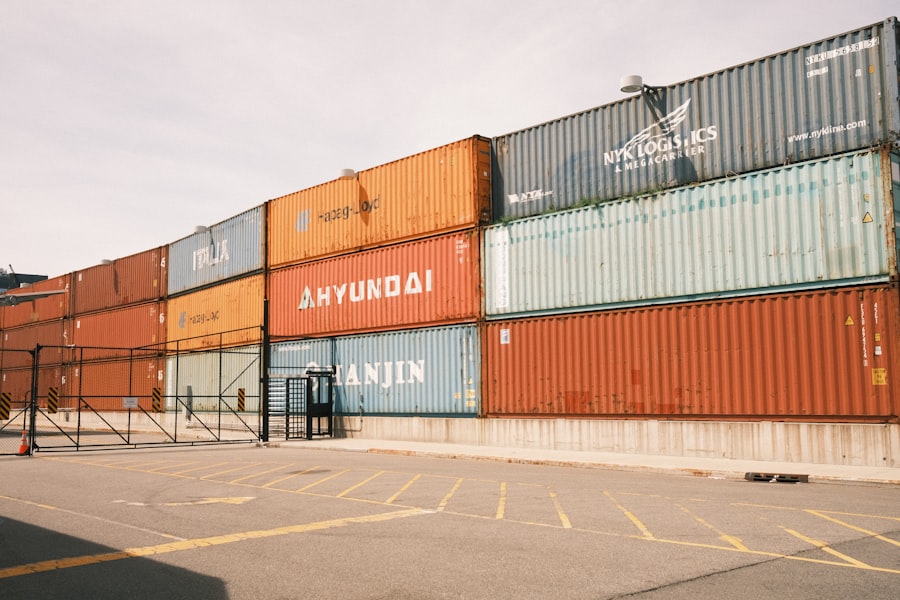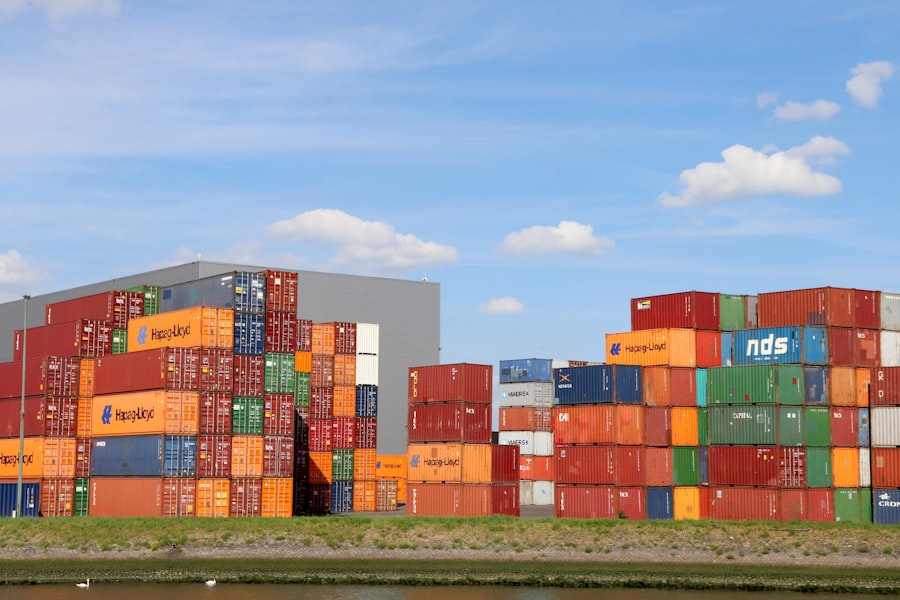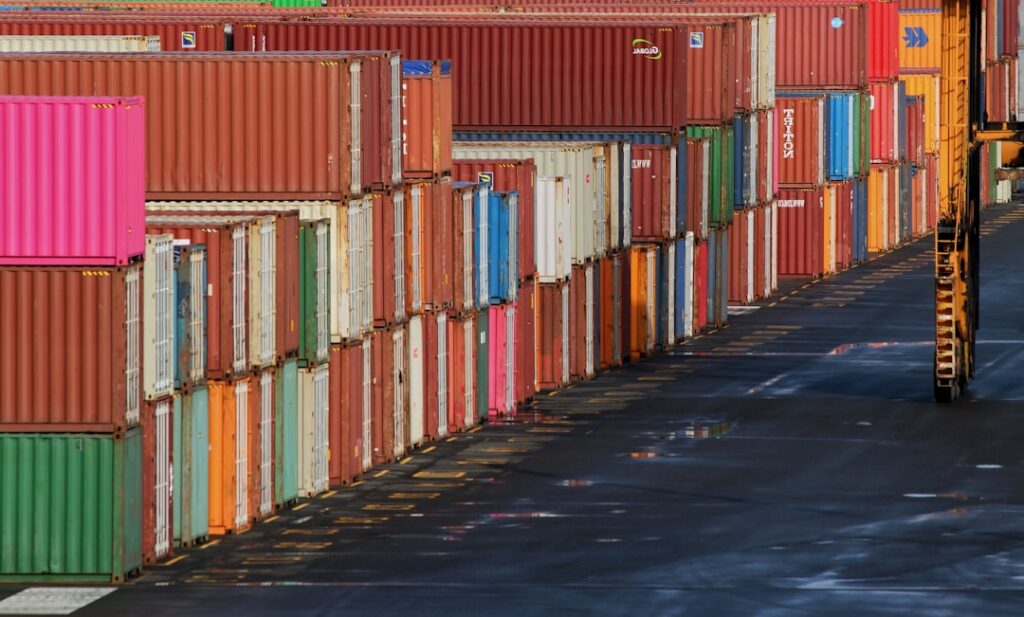In the ever-evolving landscape of software development, the need for efficient and scalable solutions has never been more pressing. I find myself drawn to Docker, a platform that has revolutionized the way applications are built, shipped, and run. Docker allows developers like me to package applications and their dependencies into containers, ensuring that they run consistently across various environments.
This containerization technology not only simplifies deployment but also enhances resource utilization, making it an indispensable tool in modern DevOps practices. The beauty of Docker lies in its ability to isolate applications from one another while still allowing them to share the same operating system kernel. This means I can run multiple containers on a single host without worrying about conflicts between different software versions or configurations.
As I delve deeper into the world of Docker, I appreciate how it streamlines the development process, enabling me to focus on writing code rather than wrestling with environment discrepancies. In this article, I will explore the installation, configuration, and management of Docker on Amla Linux, providing insights into how I can leverage this powerful tool for my projects.
Key Takeaways
- Docker is a popular containerization platform that allows for easy deployment and management of applications.
- Installing Docker on Amla Linux is a straightforward process that involves adding the Docker repository and installing the Docker engine.
- Configuring Docker on Amla Linux involves setting up user permissions, managing Docker daemon options, and configuring Docker networking.
- Creating and managing Docker containers involves using Docker images, running containers, managing container resources, and monitoring container performance.
- Networking and storage in Docker containers can be configured using Docker networking and storage drivers to connect containers and manage data storage.
- Docker Compose is a tool for defining and running multi-container Docker applications, simplifying the process of managing complex applications.
- Security best practices for Docker containers on Amla Linux include using secure images, managing user permissions, and implementing network and storage security measures.
- Monitoring and troubleshooting Docker containers involves using Docker logs, inspecting container performance, and using Docker health checks to ensure container reliability.
Installing Docker on Amla Linux
To embark on my Docker journey, the first step is to install Docker on my Amla Linux system. The installation process is relatively straightforward, and I appreciate how it can be accomplished through the command line. I begin by updating my package index to ensure that I have access to the latest software versions.
This is a crucial step, as it helps prevent compatibility issues down the line. With a simple command, I can refresh my package list and prepare my system for the installation. Once my package index is up to date, I proceed to install Docker.
Amla Linux provides a convenient package manager that simplifies this process. By executing a few commands, I can download and install Docker along with its dependencies. After the installation is complete, I verify that Docker is running correctly by checking its status.
This step gives me peace of mind, knowing that I have successfully set up the foundation for my containerized applications. With Docker installed, I am now ready to explore its configuration options and start creating containers.
Configuring Docker on Amla Linux

With Docker successfully installed on my Amla Linux system, the next logical step is to configure it to suit my development needs. Configuration is essential for optimizing performance and ensuring that Docker operates seamlessly within my environment. One of the first things I do is add my user account to the Docker group.
This allows me to run Docker commands without needing superuser privileges each time, streamlining my workflow significantly. After adjusting user permissions, I turn my attention to configuring Docker’s daemon settings. The daemon is responsible for managing containers and images, and its configuration can greatly impact performance and security.
I explore options such as setting up a custom storage driver or adjusting logging levels based on my project requirements. By fine-tuning these settings, I can ensure that Docker operates efficiently and aligns with my specific use cases. This level of customization empowers me to create a tailored environment that enhances my productivity.
Creating and Managing Docker Containers
Now that I have configured Docker to my liking, it’s time to dive into creating and managing containers. The process of spinning up a new container is remarkably simple and intuitive. With just a single command, I can pull an image from Docker Hub and create a running instance of an application.
This ease of use is one of the aspects of Docker that I find most appealing; it allows me to focus on development rather than getting bogged down in complex setup procedures. Once my containers are up and running, managing them becomes equally straightforward. I can easily list all active containers, check their status, and even stop or remove them as needed.
The flexibility that Docker provides in terms of container management is invaluable. For instance, if I need to test a new feature or update an application, I can create a new container without affecting the existing ones. This isolation ensures that my development process remains smooth and uninterrupted, allowing me to experiment freely without fear of breaking anything.
Networking and Storage in Docker Containers
As I continue to explore Docker’s capabilities, I realize that networking and storage are critical components of containerized applications. Understanding how containers communicate with each other and with external systems is essential for building robust applications. Docker provides several networking options that allow me to create isolated networks for my containers or connect them to existing networks seamlessly.
I often find myself using bridge networks for simple applications where containers need to communicate with one another. This setup allows me to define custom IP addresses and manage traffic between containers easily. For more complex scenarios, such as microservices architectures, I can leverage overlay networks that span multiple hosts.
This flexibility in networking empowers me to design applications that are both scalable and resilient. Storage is another vital aspect of working with Docker containers. By default, containers use ephemeral storage, meaning any data created within a container will be lost once it stops running.
To address this limitation, I explore volume mounts that allow me to persist data outside of containers. This capability is crucial for applications that require data retention, such as databases or file storage systems. By managing storage effectively, I can ensure that my applications maintain their state even after being restarted or redeployed.
Docker Compose for Multi-Container Applications

As my projects grow in complexity, I find myself needing to manage multiple containers simultaneously. This is where Docker Compose comes into play—a powerful tool that simplifies the orchestration of multi-container applications. With Compose, I can define all the services required for my application in a single YAML file, making it easy to manage dependencies and configurations in one place.
Creating a `docker-compose.yml` file allows me to specify the services, networks, and volumes needed for my application stack. For instance, if I’m building a web application with a frontend server, a backend API, and a database, I can define each service along with their respective configurations in this file. Once defined, starting all services with a single command saves me time and effort compared to managing each container individually.
Moreover, Docker Compose facilitates scaling services effortlessly. If I need to handle increased traffic or load on my application, I can simply adjust the number of replicas for a specific service in the Compose file and redeploy it. This level of control over multi-container applications enhances my ability to build resilient systems that can adapt to changing demands.
Security Best Practices for Docker Containers on Amla Linux
As I delve deeper into using Docker on Amla Linux, security becomes an increasingly important consideration. While containerization offers many benefits, it also introduces potential vulnerabilities if not managed properly. To safeguard my applications and data, I adopt several best practices aimed at enhancing security within my Docker environment.
One of the first steps I take is to minimize the attack surface by using official images from trusted sources whenever possible. These images are regularly maintained and updated by their maintainers, reducing the risk of vulnerabilities in outdated software components. Additionally, I make it a point to regularly scan my images for known vulnerabilities using tools like Trivy or Clair.
By proactively identifying potential security issues before deploying my applications, I can mitigate risks effectively. Another critical aspect of securing my Docker environment involves managing user permissions carefully. By adhering to the principle of least privilege, I ensure that containers run with only the necessary permissions required for their operation.
This practice limits the potential damage if a container were to be compromised. Furthermore, I regularly review and update my security policies based on emerging threats and vulnerabilities within the container ecosystem.
Monitoring and Troubleshooting Docker Containers
As with any technology stack, monitoring and troubleshooting are essential components of maintaining healthy Docker containers on Amla Linux. To ensure optimal performance and reliability of my applications, I implement monitoring solutions that provide insights into container health and resource usage. I often utilize tools like Prometheus and Grafana for monitoring my containers’ performance metrics in real-time.
These tools allow me to visualize key metrics such as CPU usage, memory consumption, and network traffic through intuitive dashboards. By keeping an eye on these metrics, I can quickly identify any anomalies or performance bottlenecks that may arise during operation. When issues do occur—whether it’s a container failing to start or an application experiencing unexpected behavior—I rely on Docker’s built-in logging capabilities for troubleshooting.
By accessing container logs through simple commands or integrating logging solutions like ELK Stack (Elasticsearch, Logstash, Kibana), I can gain valuable insights into what went wrong during execution. This information helps me diagnose problems efficiently and implement fixes promptly. In conclusion, my journey into the world of Docker on Amla Linux has been both enlightening and empowering.
From installation and configuration to managing multi-container applications and ensuring security best practices, I’ve discovered how this powerful tool can streamline my development workflow while enhancing application reliability. As I continue to explore new features and capabilities within Docker, I’m excited about the possibilities it offers for building modern software solutions in an increasingly complex digital landscape.
If you’re interested in setting up a Docker container environment on AlmaLinux, you might also find it useful to explore other server management topics. For instance, the article on migrating CyberPanel to another server provides valuable insights into server migration processes, which can be particularly beneficial if you’re managing multiple environments or planning to scale your applications. Understanding these concepts can enhance your ability to efficiently manage and deploy applications across different server setups.
FAQs
What is Docker?
Docker is a platform for developing, shipping, and running applications using containerization. It allows developers to package an application and its dependencies into a container that can run on any Linux server.
What is Amla Linux?
Amla Linux is a lightweight and secure Linux distribution designed for embedded and IoT devices. It is based on the Yocto Project and provides a minimalistic and customizable environment for running applications.
How do I set up a Docker container environment on Amla Linux?
To set up a Docker container environment on Amla Linux, you can follow the official Docker installation guide for Linux. This typically involves adding the Docker repository to your package manager, installing the Docker Engine, and starting the Docker service.
Can Docker containers run on Amla Linux?
Yes, Docker containers can run on Amla Linux. Amla Linux supports Docker through its package manager and can run Docker containers just like any other Linux distribution.
What are the benefits of using Docker on Amla Linux?
Using Docker on Amla Linux allows for easy deployment and management of applications in a lightweight and secure environment. Docker containers provide isolation and portability, making it easier to develop and run applications on Amla Linux devices.
